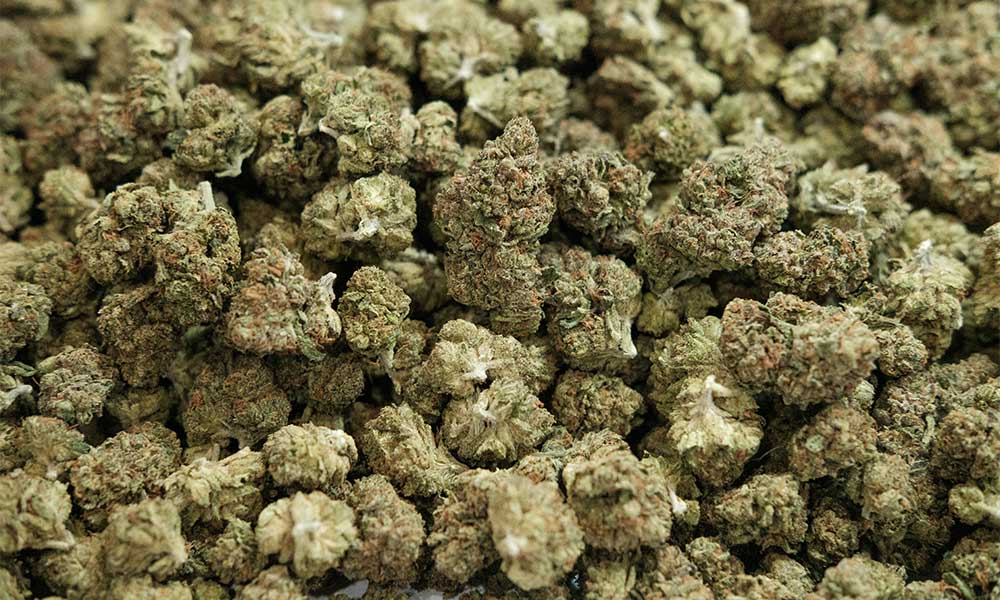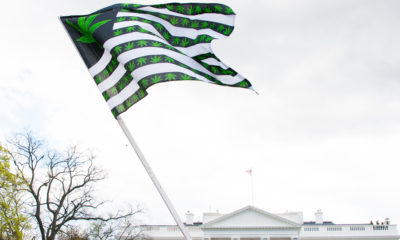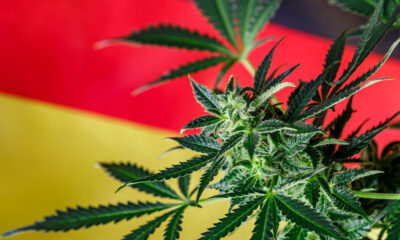
Legal
Why More Cannabis Arrests Are Good for Legalization
The DEA reported an increase in marijuana arrests and seizures last year—which is what the legal industry needs.
In June, the Drug Enforcement Administration (DEA) released its annual marijuana-war report card which revealed a troubling irony: During President Biden’s first two years in office, as more and more states legalized adult-use marijuana, law-enforcement officers across the country reported more and more cannabis arrests and more and more seizure of plants.
In 2021, the Domestic Cannabis Eradication/Suppression Program reported destroying or seizing 5.53 million cultivated cannabis plants, 743,920 pounds of “bulk processed marijuana” and arresting 6,606 people. Compare that to 2020, the last year of President Trump’s term, when police reported destroying 4.5 million plants, seizing 265,196 pounds of cannabis and arresting 4,992 people.
As NORML pointed out, that’s 20% more plants seized, 25% more cannabis arrests—and almost three times as much cannabis taken away, the biggest increases in nearly a decade, back when Biden was President Obama’s vice president. With numbers like these, you could argue that the drug war’s getting worse, as some have.
If you did, you’d be wrong, drug-policy experts told Cannabis Now. An increase in marijuana-related arrests is marijuana legalization working as intended, in this analysis. There’s no legal cannabis without illegal cannabis being illegal. In other words, big busts are exactly what you voted for.
“It can be interpreted as good news for the legalization endeavor,” said Jonathan Caulkins, a drug-policy expert and professor at Carnegie Mellon’s Heniz College and author of Marijuana Legalization: What Everyone Needs to Know.
“The legal industry should welcome law enforcement making life difficult for illegal producers,” he said. “The illegal market won’t just disappear on its own after legalization.”
Behind the Numbers
First, it’s good to be familiar with the data, which experts such as Caulkins admit isn’t comprehensive or exact but is probably the best data there is to indicate the state of the country’s weed war.
The tallies include cannabis arrests made by local, state and federal law enforcement—but don’t exactly indicate who’s busting whom. Further muddying the waters are numbers released by the states themselves.
In California, for example, the notorious Campaign Against Marijuana Planting (CAMP) reported seizing 1.2 million marijuana plants and more than 180,000 pounds of illicit pot in 2021, state Attorney General Rob Bonta announced in October of last year. But then, in February, the state Department of Fish and Wildlife (CDFW) released its own numbers: 2.6 million plants eradicated and 478,270 pounds of pot seized.
To what extent were these included or in addition to the DEA’s numbers, which indicated 3.9 million plants and 647,035 pounds busted—or pretty close to what CAMP and CDFW reported? Did that also include the 370,000 plants and 33,480 pounds that Los Angeles County Sheriff Alex Villanueva reported busting last July?
That’s not entirely clear: In an-email, a spokesperson for the state Justice Department said that CAMP, a “unique participant” in the DEA’s weed war, “isn’t required to report data directly” to the DEA, but that local law enforcement “agencies report eradication numbers directly” to the feds. A spokeswoman for CDFW said that the agency was “working on” a response at press time.
Ambiguity aside, the state-level focus, in the state with by far the most reported busts and seizures, is a good reminder that the DEA’s numbers aren’t necessarily a reflection of any sea change at the DEA or new direction from the White House. What this is, actually, is state law enforcement doing its thing in states that have legalized cannabis for adults 21 and over.
But if you’re all about the plant and all about weed freedom, should you be celebrating more cannabis arrests—or at least accepting that this is part of the legalization contract? Regardless of your personal feelings on the matter, you should be aware that police in helicopters chasing down illicit cannabis producers is exactly what the legal cannabis industry needs and wants.
This Is What “Saving Legal Cannabis” Looks Like
Last December, with the illicit market up to three times as large as the legal market, and legal operators drowning in a sea of unpaid taxes and high regulatory burdens, a group of California cannabis businesses begged Gov. Gavin Newsom for immediate tax relief. Instead, Newsom promised more enforcement, claiming—accurately—that a tax cut was the Legislature’s job.
But whether they admitted it, legal companies benefited in some way from the cannabis arrests.
“Legal cannabis businesses in California have been begging for greater enforcement against illegal producers and sellers who are encroaching and unfairly competing in their market,” said Rosalie Pacula, a professor of health policy at the University of Southern California and an expert in cannabis policy.
Legalization has encouraged more cannabis production and consumption across the board—illicit and legal. To encourage the latter and discourage the former, some enforcement mechanism is required. Anarchists and libertarians will bristle, but a legal and regulated market just won’t work without some muscle in some form.
“This sort of enforcement is necessary to discourage illegal producers,” said Pacula, who added that in some circumstances, cannabis arrests should be expected to continue if not increase: in states that legalized marijuana markets but didn’t fully decriminalize youth possession; in states that are trying to crack down on unlicensed cannabis dispensaries or seshes, or in states that are enforcing probation and parole requirements that forbid the person on parole or probation from smoking weed.
“The rise in enforcement numbers alone can’t tell us whether this enforcement is good or bad for the legal market, but it’s not surprising either way,” Pacula said. “None of us expected the illicit market to just disappear because of legal cannabis.”
And it’s also important to remember not all enforcement numbers increased. In 2020, under Trump, the DEA reported seizing more than 1 million ounces of “THC wax/oil” and 971,104 ounces of THC edibles. In 2021, under Biden, seizures of edibles and concentrates plummeted—to 413,377 ounces of wax and oil and 343,390 ounces of edibles.
It remains a factual matter that underground cannabis is cheaper than legal cannabis and is thus attractive to the consumer for that reason. That’s what dodging taxes and regulation does. But if the marijuana legalization experiment is expected to work, cannabis arrests and seizures for those choosing to ignore legalization’s rules will remain a fact of life.
























